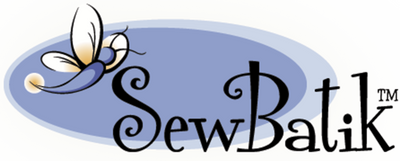
The Wider Chenille Scarf - Wow
We are back from our Test Kitchen. Enjoy our update!
The Question:
How much fabric is needed to make a chenille scarf longer and wider?
Initial Thoughts:
This question is not new.
I think anyone reading this question would have two initial questions to ask in return.
- How long would you like the scarf to be?
- How wide would you like the scarf to be?
The chenille scarves that we have made, both from one batik rayon fabric and from piecing full length strips of batik rayon together measure approximately 48" long. This measurement does not include the tassels. It measures 4 1/2" wide. This scarf took 1 1/2 yards of 45" wide batik rayon.
Knowing that the chenille scarf can be made from pieced strips of rayon, in theory, the scarf can be any length and any width. The answer to this question requires math. [ a four-letter word that many people dislike - M A T H ]
My goal is to create a simple guideline for determining scarf length and width and the yardage required. I don't believe this is as simple as it sounds. But this is the reason we are in our Test Kitchen.
Watch our tutorial - Click the image and you will go directly to our YouTube channel. Remember to subscribe!
The Answer:
One chenille scarf kit contains 1 1/2 yards of batik rayon that measures 45" wide. This scarf kit will make a scarf measuring 4 1/2" - 5" wide by 48" - 54" long. This scarf is made with seven (7) layers of rayon that have been cut on the bias.
Let's change the question.
How wide and long can we make our chenille scarf?
The answer is truly - as wide and as long as you want. All it takes is more yardage. And, it takes a bit of patience.
5 Yards of three batik rayon fabrics is what I used to make the chenille scarf in the image above. It measures 11" wide and 76" long.
I cut all the strips on the bias. All measured 12" wide.
The center strip which holds your entire scarf together is pieced in the center. I pressed the seam to one side.
I did not piece any other strips. One layer at a time, I rolled out the strips and positioned the raw edges on top of each other to make sure there wasn't a gap in the fabric.
I followed the exact same instructions to construct this larger scarf as the original one.
NOTE: Sewing the channels on a scarf of this size takes several hours and at least two bobbins. The results are well worth it!
Additional Yardage Details:
The math is really quite simple. 1 1/2 yards makes a the original chenille scarf. Three yards will make a scarf 50% wider and longer. Five to six yards will make the scarf I made for this test.
If you decide to use our Rayon Remnant Packs, which are priced very competitively, one pack contains 3 yards of strips. It will be fun to see what scarves you decide to make. Share them in the comments below.
Another Question to Answer:
Do we need to cut bias strips? Is there another way to create a chenille scarf?
The answer to this question requires a picture. Look at the following image.

First of all, I did not sew a complete scarf for this test. I simply tore 2 strips of fabric measuring approximately 5" wide for this test. I cut them into 15" segments and layered them up into seven (7) layers.
Using the straight edge of the fabric, I used a ruler and fabric pencil to mark a 45 degree angle. I sewed all the strips together starting with this marked line, and continued sewing the channels until the entire test area was sewn.
I then used my chenille cutter to open the channels on both sides of the test fabric. Everything looks good until this point.
MUST DO STEP: The straight edge of this test is straight on grain, it is not a bias cut. We MUST seal this edge with either a tight zig zag stitch or a rolled edge hem using our serger. The threads of the scarf will completely fray and fall out if we do not seal the edges. You can see from my sample that they are fraying already.
The summary here is this.... You can definitely create a scarf with this method, but the straight edge must be sealed in a pleasing manner. Don't go through all this work to have the scarf fray.
In Summary:
Everything is possible. Simply cut, sew and chenille and we will be creating amazing scarves! Thanks for following along!

